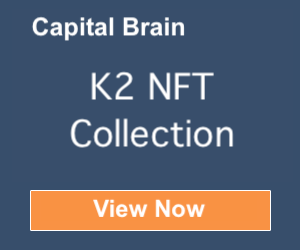Investing in afforestation #ESG
Capital Brain was recently involved in the analytics project related to the climate change. The international organization is looking to work on carbon sequestration through afforestation and forest restoration across several countries. In a sense, it is also a real estate play – a land investment project. We helped frame the thinking around building the reporting infrastructure and investing in analytical, business intelligence, and AI/ML technologies to make the project more efficient. Here are our findings that could be helpful to those of you making ESG-focused investments.
The overall long-term goals of the project was to create a reforestation and an afforestation process that maximizes a CO2 carbon sink and creates a certain number of direct (farmers involved in the project) and indirect (everyone involved in the value chain) beneficiaries. Also, there is an expectation of improvement in the management of land or forest areas contributing to emission reductions.
(According to Britannica, carbon sinks are reservoirs that retain carbon and keep it from entering Earth’s atmosphere. For example, deforestation is a source of carbon emission into the atmosphere, but forest regrowth is a form of carbon sequestration, with the forests themselves serving as carbon sinks).
In many cases, these interventions require horizontal and vertical coordination between sectors, improving implementation of conservation, restoration, sustainable management of forests, sustainable agricultural practices, and other compatible land uses.
If the land in question crosses borders, then it adds another layer of complexity – restoring forested landscapes relies on international and national catalysts for reforestation, and on traditional and indigenous communities buy-in and leadership – and subsequently forest management.
The KPI systems and technologies require tracking practices and metrics that promote soil improvements and carbon sequestration, reducing the application of nitrogen fertilizers, increasing the seed survival rate, and promoting sustainable grassland and cropland management.
General Technology Recommendations
- The ultimate goal is to build a reliable data and reporting infrastructure and leverage technologies, including artificial intelligence and machine learning to improve all project activities;
- Create a system for results verification and validation to ensure that results from tracking systems during the data collection process are credible. F. ex. use of mobile device in the field to record any novelty compared to the guide and the previous data point. Record each image in the device, use AI to compare with the image from a previous collection time and against default to track deviations and predict seed survival/failure rate. Another option, use drones and the GIS systems to track the progress of planting;
- Create predictive early warning information model. Early warning risk factors include weather and climate data and weather patterns, harvest yields, and market fluctuations, quality of soil and water for particular kind of seed, data collected from the field by humans and drones, GIS data, metrics for efficiency of the fertilizer use => create a database and use AI to analyze correlations and predict wildfires or seed survival/failure rate;
- The same predictive early warning information model can be used to create an Insurance Product for de-risking the project funds;
- The same predictive early warning information model can be used to create a Financial or Carbon Credits Index that can be traded on the public exchange or be offered to institutional investors to create an additional revenue stream;
- Create the data library that can support the automation, analytics tools via dashboards and the KPI reporting infrastructure (see below for selected metrics to be tracked);
- Research the new technologies that would help transition to the use of renewable energy;
- Leverage AI to provide simultaneous translation during outreach events and for generation and automation of legal contracts or researching country-specific regulations and requirements for proceeding with the planting projects.
Impact on Country Level Sample Metrics
Intensity of exposure to climate risks and the degree of vulnerability;
Size of population and/or social or economic assets or capital of the country exposed to climate change risks and impacts;
Number of direct beneficiaries in the planting of trees (population number in the area and as % of population);
Level of social and economic development (including income level) of the country and target population (e.g. minorities, disabled, elderly, children, female heads of households, indigenous peoples, etc.);
Improvement of poverty rate due to new employment opportunities generated and increased income;
Expected rate of increase in the total number of employment opportunities next year as planting rate increases;
Number of male and female farmers applying improved and effective practices contributing to CO2 sequestration;
Beneficiaries by gender – number of males and females benefitting from the adoption of diversified, climate-resilient livelihood options;
Metrics for monitoring quality and quantity of water (e g number of hectares of watersheds protected, water flow, erosion control, water storage, and water infiltration);
Effective use of equipment.
Sample Investment and Financial Metrics and Risks
Fund projects that show maximum potential for anticipated tons of CO2 equivalent sequestered per hectare;
Forecast the number of direct and indirect beneficiaries of the project, taking into account the needs of developing countries that are particularly vulnerable to the adverse effects of climate change;
Track key financial risk indicators in real time;
Identify leading indicators of financial risk within the portfolio based on the submission of information from intermediaries and implementing entities/countries;
Aim for shorter project approval time –> create a framework of what activities can be eligible for simplified approval;
Disbursement goal – volume of finance leveraged by the project fund;
Funding approved and disbursed by country and by project type;
Foreign exchange risk;
Credit risk.
Sample Operating Level Metrics and Risks
Major groups of operating activities to be measured:
Carbon Sequestration
Productivity of crops
Forestry/tree growth
Water supply/quality
Anticipated tons of CO2 equivalent sequestered per hectare per age of the forest – indicators to calculate the total carbon sink and year over year comparisons, calculate carbon stocks in organic soils, trees and landfilled yards, as well as emissions from fertilizer applications to soil;
Number of hectares planted;
Average tree survival rate per hectare planted;
Number of tons of carbon to be captured per hectare through reforestation vs afforestation efforts;
Hectares of land under improved effective management that contribute to CO2 sequestration;
Forest traceability and inventory tracking.
Reach out
to discuss machine learning initiatives at your real estate fund

